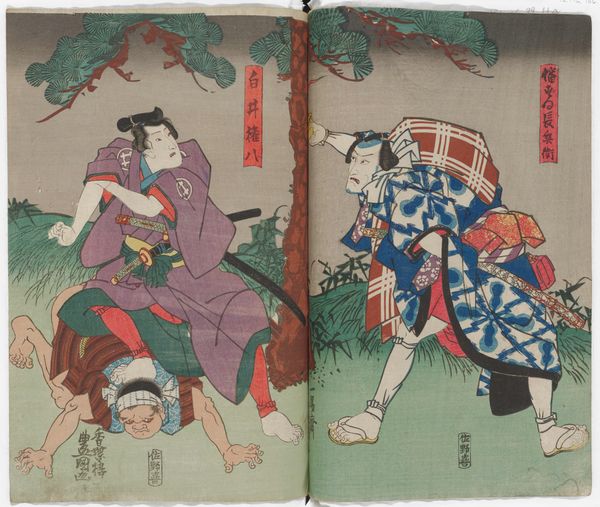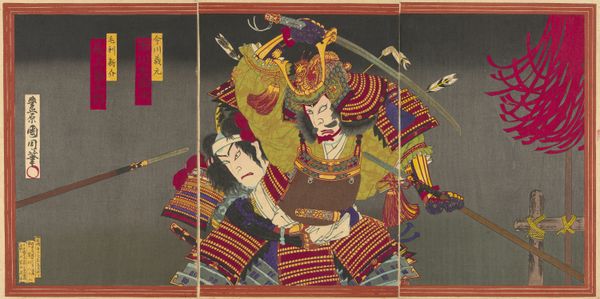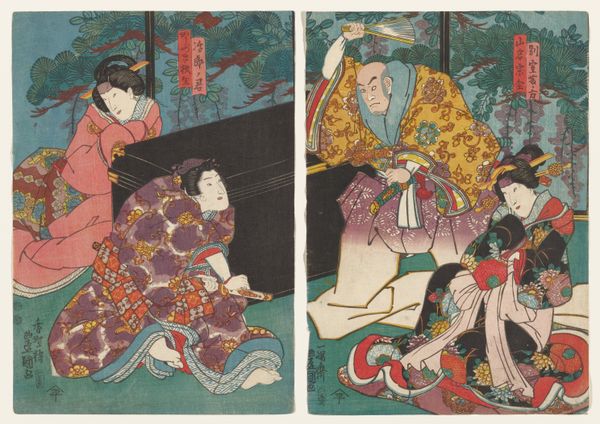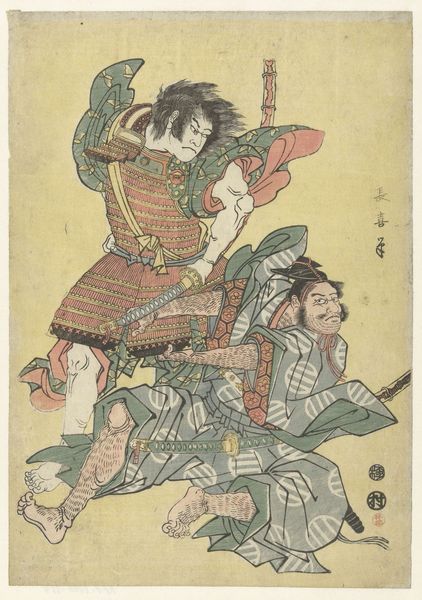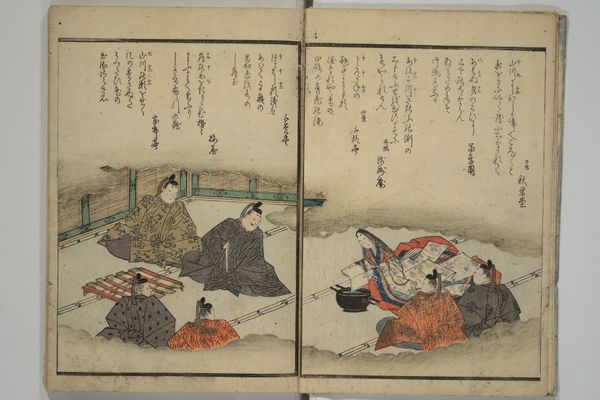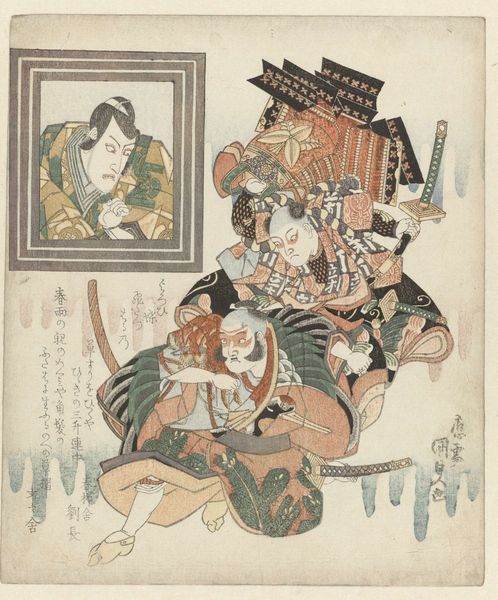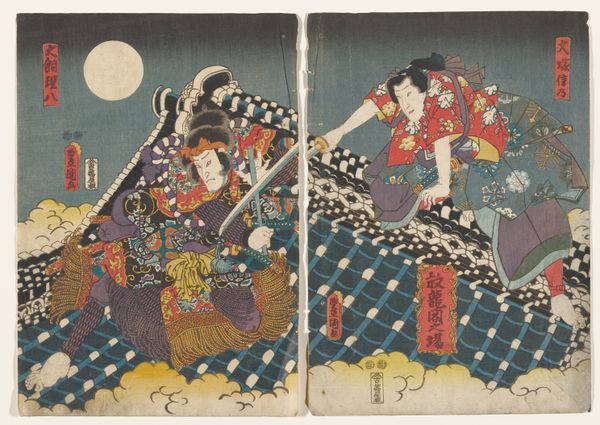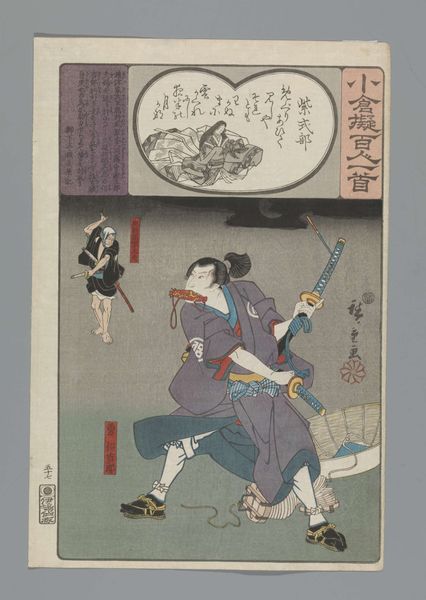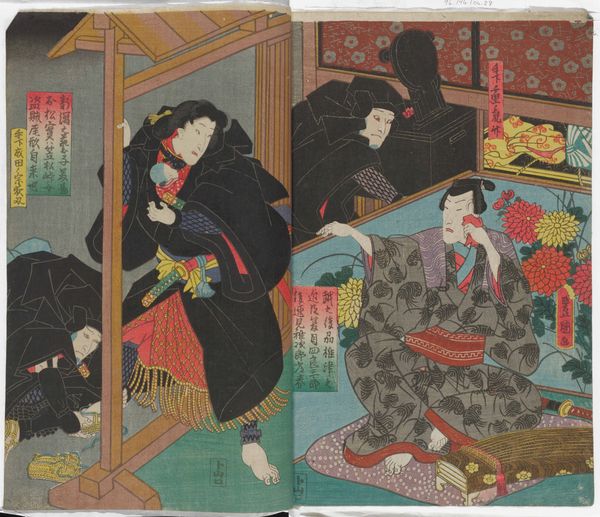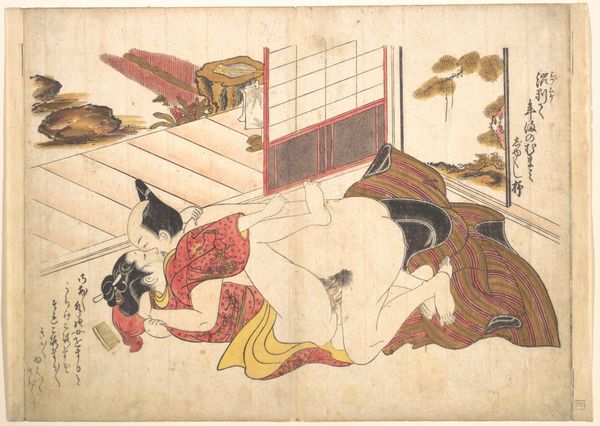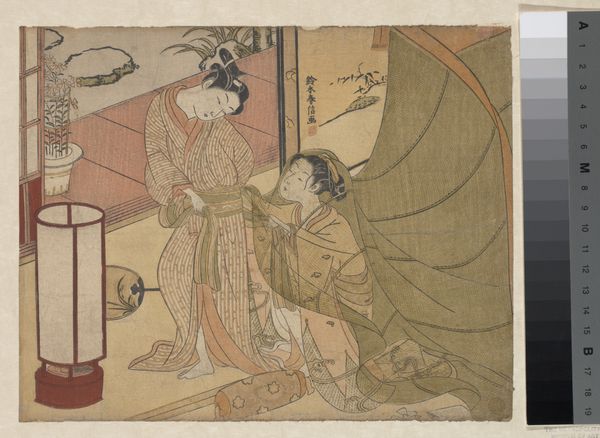
Actors Ichikawa Kodanji IV as the Ghost (Rei) of Asakura Tōgo (R) and Bandō Hikosaburō IV as Orikoshi Tairyō (L) 1851
0:00
0:00
print, ink, color-on-paper
#
childish illustration
#
water colours
# print
#
japan
#
personal sketchbook
#
ink
#
color-on-paper
#
coloured pencil
#
sketchbook drawing
#
watercolour bleed
#
watercolour illustration
#
sketchbook art
#
marker colouring
#
watercolor
Dimensions: 14 3/8 × 9 5/8 in. (36.5 × 24.5 cm) (image, sheet, vertical ōban) each sheet
Copyright: Public Domain
This woodblock print by Utagawa Kunisada depicts actors in a Kabuki drama, likely made for sale to theatergoers in Japan. It shows Ichikawa Kodanji IV as a bloodied ghost confronting Bandō Hikosaburō IV as Orikoshi Tairyō, who is also battling another figure. Kabuki was a major cultural institution, and prints like these served to amplify its popularity. Consider the intense expressions and exaggerated poses of the actors. These visual codes, along with the ghostly figure, signaled to audiences familiar with Kabuki's conventions the dramatic nature of the scene. Prints such as these were not just commercial products but also social documents. The prevalence of Kabuki themes in ukiyo-e prints speaks to the entertainment preferences of the merchant class in the Edo period, while the detailed depiction of actors reflects the celebrity culture of the time. To understand this print fully, we need to consult playbills, theater reviews, and social histories of the Edo period. By doing so, we can appreciate how art is always embedded in a specific time and place.
